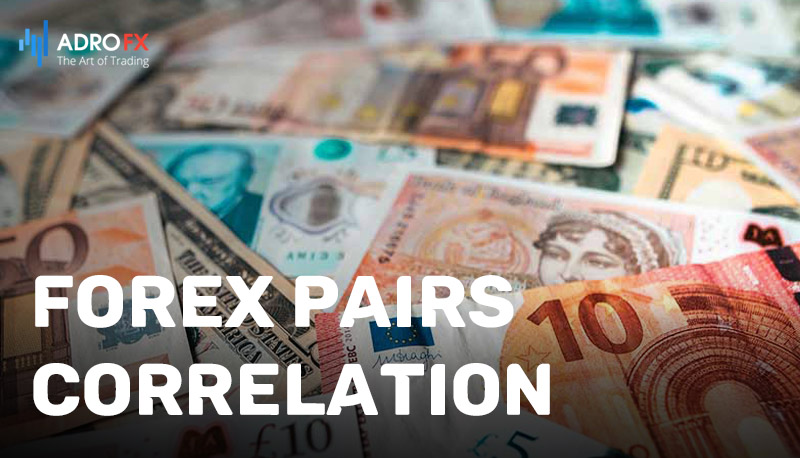How to Efficiently Diversify a Currency Trading Portfolio

In the intricate landscape of currency trading, success hinges not only on astute market analysis and shrewd decision-making but also on the strategic composition of your trading portfolio. The world of currency trading is characterized by its dynamic nature, where exchange rates are subject to multifarious influences that can rapidly shift the trading landscape.
Effective portfolio diversification emerges as a cornerstone strategy in navigating these volatile waters. As currency markets intertwine with global economies, geopolitical events, and intricate financial dynamics, a well-diversified portfolio can provide a shield against undue risk and enhance your prospects for sustainable profitability.
This article delves into the art of efficiently diversifying a currency trading portfolio, shedding light on key principles, strategies, and considerations that can help you optimize your trading approach. Whether you're a seasoned forex trader seeking to fine-tune your approach or a newcomer looking to fortify your foundation, this guide aims to equip you with the insights needed to navigate currency markets with confidence.

What Is Diversification?
Diversification is a strategy used in investing and portfolio management to reduce risk by spreading investments across a variety of assets. The goal of diversification is to minimize the impact of poor performance from a single asset or asset class on the overall portfolio's returns.
By investing in different types of assets, such as stocks, bonds, real estate, commodities, and others, investors aim to achieve a balance that can help mitigate the potential negative impact of a downturn in any one market or sector. The rationale behind diversification is that different assets tend to react differently to various market conditions and economic events.
For example, during periods of economic growth, stocks might perform well while bonds could underperform. However, during economic downturns, bonds might offer more stability while stocks could experience declines. By holding a mix of both, an investor can potentially reduce the overall volatility of their portfolio.
Diversification is not just limited to different types of assets; it can also involve diversifying within asset classes. For instance, within the stock market, an investor might diversify across various industries or sectors to further reduce risk. Similarly, within bonds, an investor might hold different types of bonds with varying maturities and credit qualities.
While diversification can help reduce risk, it's important to note that it might also limit potential returns, especially in cases where a specific asset class or investment performs exceptionally well. Striking the right balance between risk and return based on an individual's financial goals, risk tolerance, and investment horizon is a key consideration when implementing a diversification strategy.
Maintain a Compact Portfolio
When establishing a diversified investment account, it's advisable to maintain a compact portfolio. This approach ensures that you can effectively manage risks and stay well-informed about your investments. Ideally, aim for a diversified portfolio consisting of three to four different instruments.
For instance, you might consider shorting EUR/USD, purchasing GBP/JPY, and selling AUD/CAD. Opting for such a condensed portfolio offers several benefits:
- Enhanced Monitoring: A compact portfolio allows for easier and more diligent monitoring, enabling you to make timely adjustments as needed.
- Comprehensive Analysis: Managing a smaller portfolio provides the opportunity to thoroughly analyze the overall market environment, delve into fundamental factors, and assess the technical intricacies of your trades.
Maintaining a concise portfolio offers various advantages, including the ability to:
- Stay organized and attentive to your investments.
- Minimize the likelihood of inadvertently trading the same currencies, as discussed in the subsequent section on correlations.
In summary, a smaller, well-chosen portfolio allows for focused oversight and comprehensive evaluation, leading to better-informed decision-making and risk management. 
Forex Pairs Correlation
Correlation refers to the statistical measure of how two variables move in relation to each other. In the context of forex trading, currency pairs can exhibit correlation, which means they tend to move in a similar or opposite direction over a certain period of time. Understanding forex pairs correlation is important for risk management and portfolio diversification in the foreign exchange market.
There are three main types of correlations between forex pairs:
- Positive Correlation: When two currency pairs have a positive correlation, they generally move in the same direction. For example, if EUR/USD and GBP/USD both tend to rise together and fall together, they have a positive correlation.
- Negative Correlation: Negative correlation occurs when two currency pairs move in opposite directions. If EUR/USD tends to rise when USD/JPY falls and vice versa, these pairs exhibit a negative correlation.
- No Correlation (or Low Correlation): When there's little to no consistent relationship between the movements of two currency pairs, they are said to have low or no correlation.
Correlations can change over time due to various factors, including shifts in market sentiment, economic data releases, geopolitical events, and changes in interest rates. It's important to note that while correlations can provide insights into how currency pairs might move, they are not static and can vary under different market conditions.
Using correlation analysis can be beneficial for traders and investors in several ways:
- Risk Management: Correlation analysis helps to identify pairs that move similarly, which can lead to concentrated risk. If multiple pairs in a portfolio are highly positively correlated, a sudden adverse movement in one pair could impact others as well. Diversifying by choosing pairs with lower correlations can mitigate this risk.
- Portfolio Diversification: By selecting currency pairs with low correlations, traders can create a more diversified portfolio. This can help spread risk and potentially improve the overall stability of the portfolio.
- Trade Confirmation: Correlations can provide additional insight into potential trade opportunities. If multiple correlated pairs are indicating a similar trend, it can provide a stronger basis for entering a trade.
- Hedging Strategies: Some traders use correlated pairs for hedging purposes. For example, if a trader has a long position in one pair and wants to protect against potential losses, they might enter a short position in a negatively correlated pair.
It's important to use correlation analysis as part of a broader trading strategy, considering other factors such as technical and fundamental analysis. Keep in mind that while correlations can provide useful information, they are not foolproof indicators, and unexpected market events can still impact the relationships between currency pairs. 
Thorough Analysis
Before executing any trades within your diversified portfolio, your first step should always involve conducting thorough due diligence by delving into the fundamental analysis of the currencies involved.
To achieve this, make effective use of the economic calendar and various news sources at your disposal to comprehensively assess the market conditions. Prior to entering a trade, investing substantial effort into research is crucial. Among the key factors to prioritize are:
- Establish a Reason: Always substantiate your trades with a well-defined rationale. Prior to entry, ensure you possess a clear justification.
- Risk Management: Employ multiple risk-management strategies to mitigate potential losses. These encompass setting up Stop Loss orders and optimizing your trade sizes.
- Document with a Trading Journal: An additional approach to conducting due diligence is through the meticulous use of a trading journal. This tool aids in tracking and evaluating your trading decisions.
Comprehend Macro Factors
For instance, if you are contemplating purchasing the dollar, a deep understanding of the macroeconomic factors in the United States is imperative. Assess factors like the likelihood of unchanged or increased interest rates at the upcoming FOMC meeting.
Prior to executing a dollar purchase, it's vital to be well-versed in these issues and their potential impact on your portfolio.
Blend with Technical Analysis
Furthermore, integrate your foundational knowledge of each currency pair with technical analysis. Technical analysis involves studying charts through mathematical models.
This analytical approach assists in pinpointing optimal positions for buying or selling instruments. However, bear in mind not to solely rely on a single tool. In the event that indicators present mixed signals, consider cross-referencing with alternate tools through backtesting or, if necessary, abstain from entering the trade altogether.
Effective Management of a Diversified Account
As previously highlighted, the primary objective of managing a diversified account is to mitigate the risks associated with any one currency pair. Nonetheless, there may be instances where all currency pairs within your portfolio underperform.
Using the aforementioned example, EUR/USD could surge, GBP/JPY might decline, and AUD/CAD may experience significant volatility. In such a scenario, meticulous monitoring of your account becomes paramount to avert the possibility of a margin call.

Risk Oversight
To curtail risks, your initial step should encompass assessing the risk exposure of your account and judiciously placing Stop Loss orders where appropriate. It is advisable to adhere to the rule of risking only 2% of the overall funds within your account.
Implementing a Stop Loss mechanism will safeguard against further losses, ensuring that losses are contained within predefined limits.
Lot Size Consideration
Subsequently, to mitigate risks, it is prudent to employ modest lot sizes. While deploying larger lot sizes can potentially yield substantial profits, it also exposes you to considerable and potentially insurmountable risks.
This aspect is pivotal, as many traders underestimate the impact of trade size, often leading to substantial and unforeseen losses.
Resist Greed
Lastly, maintaining a discipline of exiting trades once your predefined target is reached is crucial. Prolonged stay in a trade can result in unfavorable outcomes.
While aiming to maximize profits from your trades is commendable, it's important to recognize that market dynamics can abruptly shift, impacting your gains. If your initial target was to secure a $10 profit from a trade, exercising restraint and refraining from holding on until reaching $20 is advisable.
In Conclusion
Currency trading's success hinges on strategic portfolio construction. Dynamic markets demand efficient diversification for risk mitigation and sustainable profits. This guide equips you, whether a seasoned or new trader, with insights to navigate the currency realm.
Understanding diversification principles and currency correlations is vital. Thorough analysis, blending fundamentals and technicals, aids decision-making. Managing your diversified account is pivotal. Monitor risk, use appropriate lot sizes, and resist greed to navigate changing market currents.
This guide serves as your compass in the intricate currency landscape. Informed decisions, risk control, and adaptability are your allies. Currency markets are ever-changing; continuous learning is your edge.
About AdroFx
Established in 2018, AdroFx is known for its high technology and its ability to deliver high-quality brokerage services in more than 200 countries around the world. AdroFx makes every effort to keep its customers satisfied and to meet all the trading needs of any trader. With the five types of trading accounts, we have all it takes to fit any traders` needs and styles. The company provides access to 115+ trading instruments, including currencies, metals, stocks, and cryptocurrencies, which make it possible to make the most out of trading on the financial markets. Considering all the above, AdroFx is the perfect variant for anyone who doesn't settle for less than the best.










